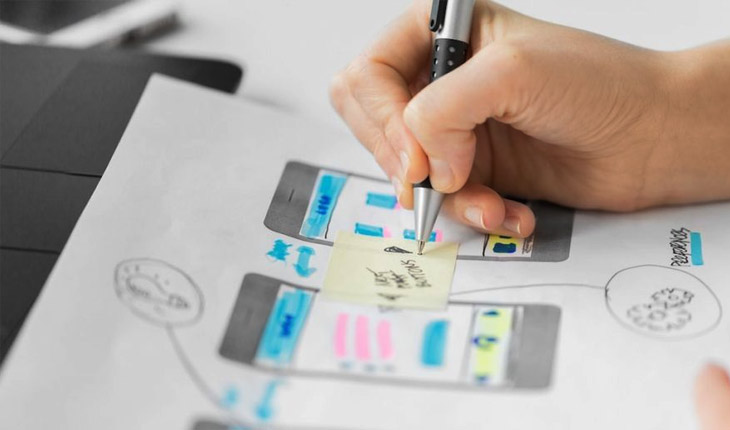In the digital age, having a professional online presence is crucial for businesses and individuals alike. WordPress, a leading content management system, a significant role in this journey.
Among the many choices users face, two essential roles emerge: WordPress designers and WordPress developers. Though they may seem interchangeable at first glance, they serve distinct functions that are crucial to the success of any WordPress project.
Defining Roles: What Does Each Do?
WordPress Designer
A WordPress designer focuses primarily on the visual elements of a website. This includes:
- User Interface (UI) & User Experience (UX): Designers create layouts that are not only visually appealing but also user-friendly. They ensure that visitors can navigate the website effortlessly.
- Graphic Design & Branding: Designers often incorporate a brand’s identity into the website. They utilize color schemes, typography, and images that align with the company’s mission and values. For example, if a brand is youthful and energetic, the designer will likely choose bright colors and playful fonts.
- Theme Customization: Many designers work with pre-existing themes in WordPress, customizing them to fit the client’s needs. This often involves adjusting styles and layouts without diving too deeply into code.
WordPress Developer
In contrast, a WordPress developer is more technically inclined and is responsible for:
- Back-end Development: Developers work with the underlying code that makes the website function. This includes managing databases and server-side applications to ensure smooth operation.
- Plugin Development: Developers often create custom plugins to add specific functionality to a site. For example, if a business needs a unique feature that isn’t available through existing plugins, a developer will write code to fill that gap.
- Troubleshooting and Maintenance: A key part of a developer’s job is ensuring that the website runs smoothly and efficiently. This involves debugging issues and performing regular maintenance to apply updates and patches.
Skill Sets and Tools
Designers’ Skill Sets
WordPress designers typically possess skills in:
- Graphic Design Software: Tools like Adobe Photoshop or Illustrator are common among designers to help create visual assets.
- HTML/CSS Knowledge: While not as deep as a developer’s understanding, familiarity with HTML and CSS is essential for making style modifications.
- Responsive Design: Designers must ensure that websites look good on all devices, requiring an understanding of mobile-first design principles.
Developers’ Skill Sets
WordPress developers, on the other hand, are often skilled in:
- Programming Languages: Proficiency in languages like PHP, JavaScript, and SQL is necessary to create and manage the website’s functionality and database interactions.
- Version Control Systems: Familiarity with tools such as Git is important for managing and tracking changes to code.
- APIs: Developers often work with various APIs to extend WordPress functionality, integrating external services into the site.
Collaboration: How Designers and Developers Work Together
A successful WordPress site often requires collaboration between designers and developers. Here’s how they typically interact:
- Initial Planning: Designers and developers should communicate from the start, discussing visual concepts along with technical constraints. This avoids potential issues later in the development process.
- Feedback Loops: Designers present their mock-ups to developers, who then provide feedback on what is feasible within the platform’s limitations. This collaborative dialogue helps streamline the process and enhances the final product.
- Ongoing Communication: Even after the launch, the roles often continue to overlap. For instance, a designer may need to adjust a layout based on development updates, or a developer might need to optimize a feature based on user feedback.
Choosing the Right Professional for Your Project
When to Hire a Designer
If your project is heavily focused on aesthetics, a designer is a must. For example:
- Creating a lifestyle blog that relies on visual storytelling.
- Building a portfolio site that showcases creative work.
When to Hire a Developer
Conversely, if you require deep technical functionality, a developer should be your first choice. Situations include:
- Setting up an e-commerce site needing custom payment functionality.
- Developing a complex membership site with different user roles and permissions.
The Ideal Combination
The ideal scenario often involves hiring both a designer and a developer, especially for larger projects. This allows for a cohesive website that is both visually appealing and functionally robust.
Conclusion
In the landscape of WordPress website development, the distinction between designers and developers is critical. By understanding their unique roles and how they contribute to the overall success of a project, you can make informed decisions about who to hire for your specific needs.
Start by assessing your project requirements and consider the right mix of design and development expertise to achieve your goals. Investing in the right professional can lead to a website that not only looks good but also functions seamlessly, enhancing the user experience and driving success. WordPress Designer vs. Developer: Key Differences Explained

